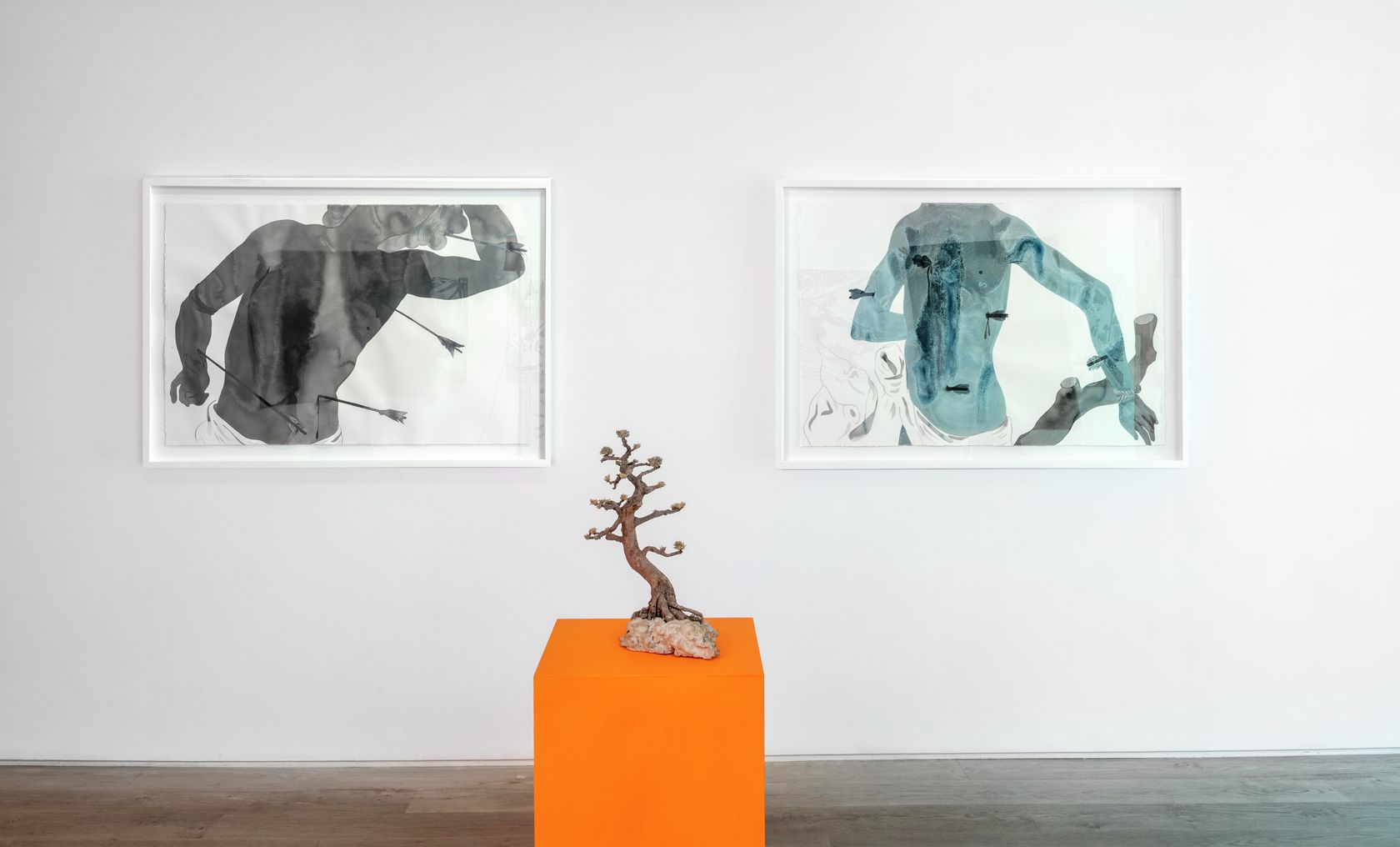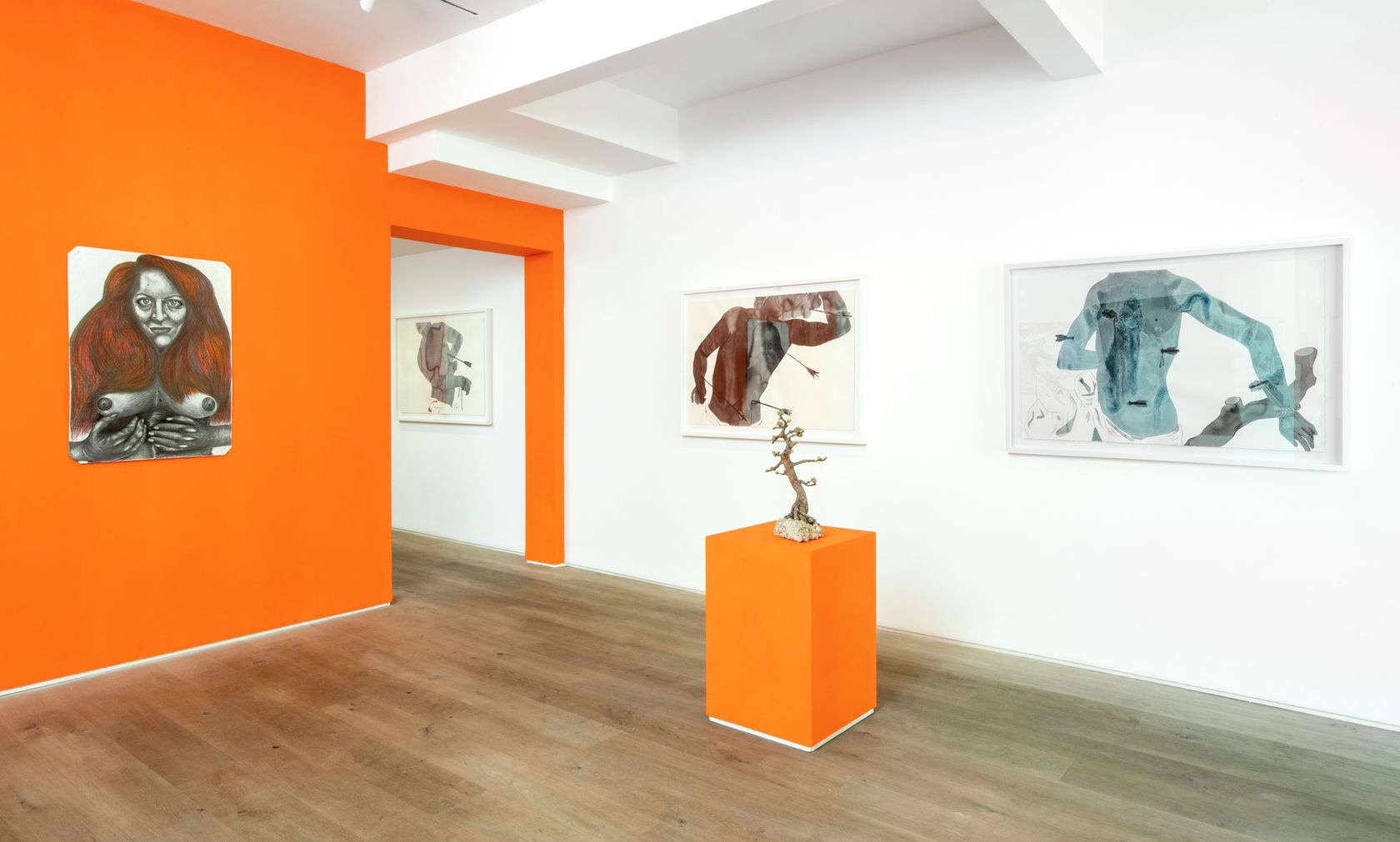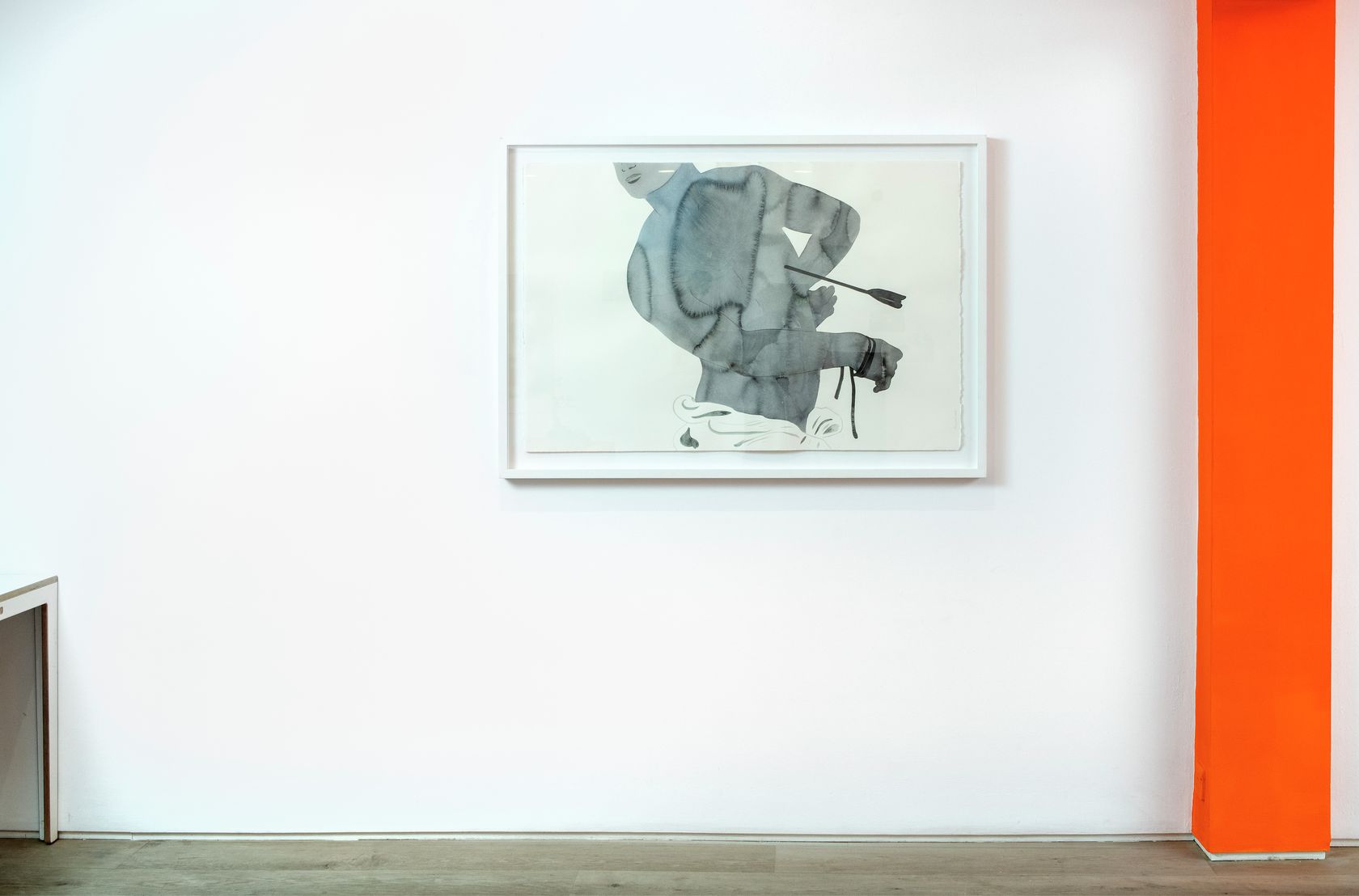-
 1/3
1/3
Françoise Pétrovitch, As if ever a wave has reached the shore
-
 2/3
2/3
Françoise Pétrovitch, As if ever a wave has reached the shore
-
 3/3
3/3
Françoise Pétrovitch, As if ever a wave has reached the shore
Midnight. Sleepless. Watching an old Film by Jean Luc Godard. There is this one scene in which the heroine, played by Marina Vlady, who we have followed over the course of the narration is entering into a Parisian cafe.Then …a whispering voice-over, it’s him, Godard himself, he who apparently knew everything about cinema, but also never ceased to believe that cinema and life need each other to exist, to nurture, to infiltrate, to enlighten. So Godard, like speaking in a ghostly inner monologue draws us inside his head while watching the protagonists of his film contemplating.
"But first of all, what is an object? Maybe an object is what serves as a link between subjects, allowing us to live in society, to be together. But since social relations are always ambiguous, since my thoughts divide as much as unite, and my words unite by what they express and isolate by what they omit, since a wide gulf separates my subjective certainty of myself from the objective truth others have of me, since I constantly ended up feeling guilty, even though I feel innocent, since every event changes my daily life, since I always fail to communicate, to understand, to love and be loved, and every failure deepens my solitude, since. I cannot escape the objectivity crushing me, nor the subjectivity expelling me, since I cannot rise to a state of being nor collapse into nothingness... I have to listen, more than ever I have to look around me, at the world, my fellow creature, my brother.
JEAN-LUC GODARD,
Deux ou trois choses que je sais d’elle, 1967
"Mon semblable, mon frere", this is what the director quotes from Baudelaire’s preface to the „Fleurs du Mal“ and so does T.S. Eliot in his master poem „Waste land“. It seems the three of them send an exclamation mark to their readers, viewers, addressing the eternal truth: that there is „the other“ - as the philosopher Emmanuel Levinas has put it, that shall be reached and touched…. but how?
This exhibition is asking the same question by gathering international artists from Nigeria, Israel, Germany and France whose works are dealing with various forms of representations of the body, with language, with desire and the multifaceted interconnected ways we exist socially.
Often there seems an invisible membrane between the work and the audience. Some thin veil that separates us - from the other (the other human/ and from the work) even though desire and logic tell us that we are close to them. Drawing especially is a medium that has the ability to evoke and create intimacy, to invite people to share a precious moment of fragility and intensity.Paper itself can be seen as an equivalent to the human skin, a delicate surface that breathes and manifests our connection to the world. Through images of the body we encounter ourselves as we encounter the other in all complex fluidity and shocking and beautiful presence and in ambiguity and doubt. The exhibition follows those depictions and rises the question: what happens in true human encounters?